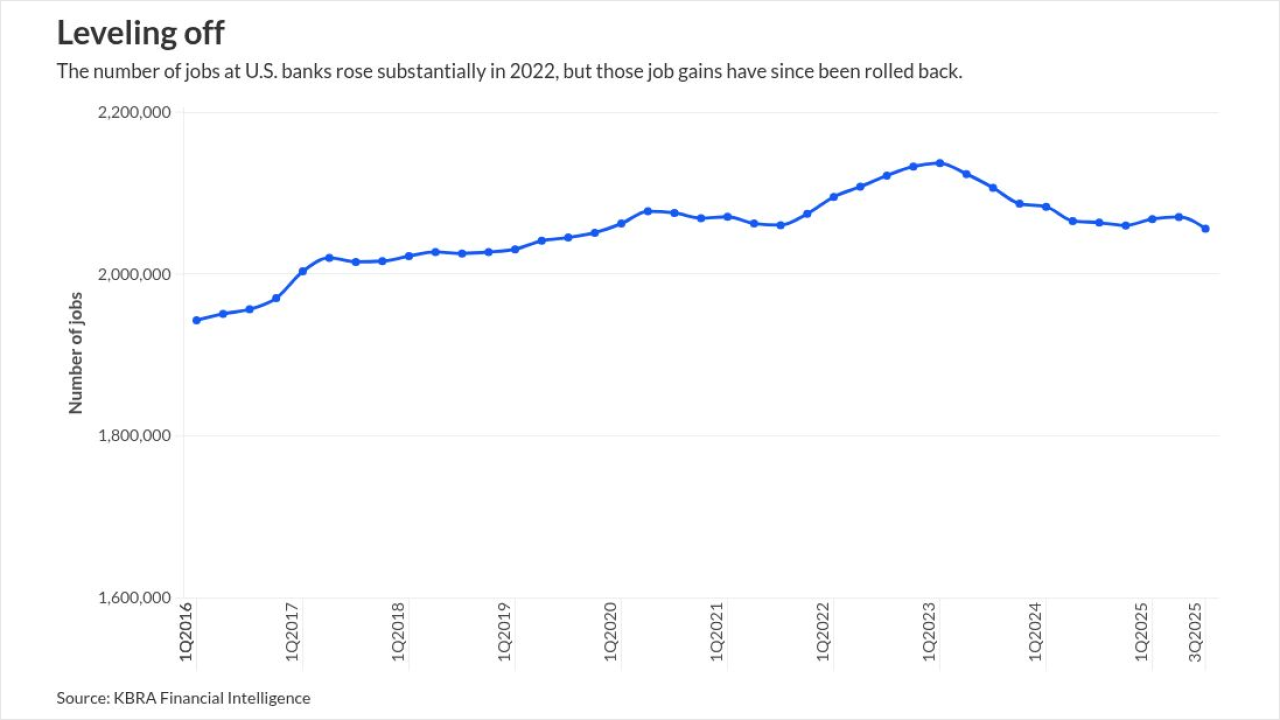
Over the past few months, several U.S. banks have either hinted or said outright that they are
There are valid reasons for this, as stablecoin issuance is a complex trade-off for traditional banks, more so than for nonbanks. On the plus side, there are the benefits of servicing clients wishing to transact on-chain, as well as the revenue stream from interest paid on assets held as stablecoin reserves. On the minus side, there's the potential diversion of client funds into stablecoins, implying
So, traditional banks are unlikely to become direct issuers of public blockchain stablecoins — but that doesn't mean they won't get involved in the spread of on-chain payments. There are many other ways banks can earn revenue on stablecoins without cannibalizing their traditional business.
What's more, applying their existing strengths to the evolution of blockchain assets and services could end up not only adding new revenue streams, it could also end up transforming banking as we know it.
So, how can banks make money on stablecoins without getting involved in direct issuance?
One obvious way is through servicing stablecoin issuers by offering basic accounts along with the processing of inflows and outflows of funds. There are also fees to be earned on the
This is straightforward banking stuff, nothing particularly transformative here.
Things start to change, however, when we look at the potential impact of stablecoin custody.
Last month, U.S. regulators
On-chain custody is a totally different undertaking from traditional asset custody, involving new technology builds and complex security arrangements. But once in place, the range of assets that can be custodied becomes limited only by a bank's commercial strategy. For instance, if a bank can custody ETH, it also has the capacity to custody any asset that runs on ethereum, from stablecoins to tokenized securities.
The revenue from on-chain custody services could become significant as the range of supported assets grows — fees tend to be higher than those for traditional assets given the additional technology considerations and the relatively high insurance and maintenance costs.
What's more, crypto custody could open the door to a new type of relationship with clients.
Here's where we start to see a potential transformation of banking.
Custody is about knowing your assets are safe and that you can access them when needed. Since stablecoins are meant to be used rather than stored as they don't earn interest, this access will presumably need to be frequent, which makes usability a prime consideration.
In this era of digital banking, mobile and web apps are already a key interface for most banking relationships, enabling payments, spending reports and the real-time checking of balances, with some also offering additional features such as asset management.
The Treasury Department issued a request for comment Monday, seeking input on four categories of technology that could be used to detect and combat illicit financial activity in crypto assets.
The on-chain parallel is the "wallet," from which crypto users access balances, execute transfers and monitor inflows. Wallets also often seamlessly connect to other services such as exchanges, decentralized finance applications, NFT generators, online merchants and more. They can store digital identities, help manage web3 social media accounts, hold ticket tokens, and basically help users manage any aspect of their on-chain activity.
If a bank starts to offer user-friendly stablecoin custody, its traditional app will need to incorporate some crypto wallet characteristics such as executing stablecoin transfers. And once it's done that, it might as well offer clients broader access to the expanding on-chain world.
The concept of the "super-app" is already well known outside banking.
Two high-profile examples are China's Alipay and WeChat. Each has over one billion users for whom the app is the nexus of their daily lives, enabling savings, messaging, online purchases, grocery shopping, subscriptions, ride hailing, medical appointments, micro-loans, games and much more. Neither started out as a banking app, but both have evolved to include banking-like services plus access to anything that requires digital payments or online identity. Together, they handle over 90% of all Chinese mobile transactions.
American banks are no doubt concerned that a U.S.-based tech company could apply its design experience and large community to the concept of an all-in-one app. Coinbase's
A banking super-app would not only leverage existing connections by offering business clients access to retail clients and vice versa. It would also generate troves of consumer data that could raise privacy issues, but in aggregate would shed useful light on consumer behavior, supporting the development of new banking products while getting granular real-time insight into economic trends.
And, it could smooth distribution of funds and other assets the bank has helped tokenize, delivering yet another new revenue stream.
There's also the likely boost to customer loyalty. Were U.S. consumers to increasingly transact their daily lives via their bank-provided wallet, the bank's name could become synonymous with convenience, setting it up for stronger competition against
Of course, the range of services within a super-app need not be limited to on-chain activities; but the network build for crypto asset custody would set the stage for distributed communities, and the boundaries between traditional and on-chain payments will blur with time.
In sum, offering stablecoin services other than direct issuance could set U.S. banks on a path toward a broader and deeper service for clients of all types. The transformation won't be simple, possibly requiring regulatory tweaks, infrastructure adjustments, habit modifications, and more complex changes for banks and users to get comfortable with the new relationship.
But it would position banks to take advantage of rather than be hurt by the current onrush of changes in financial technology.






